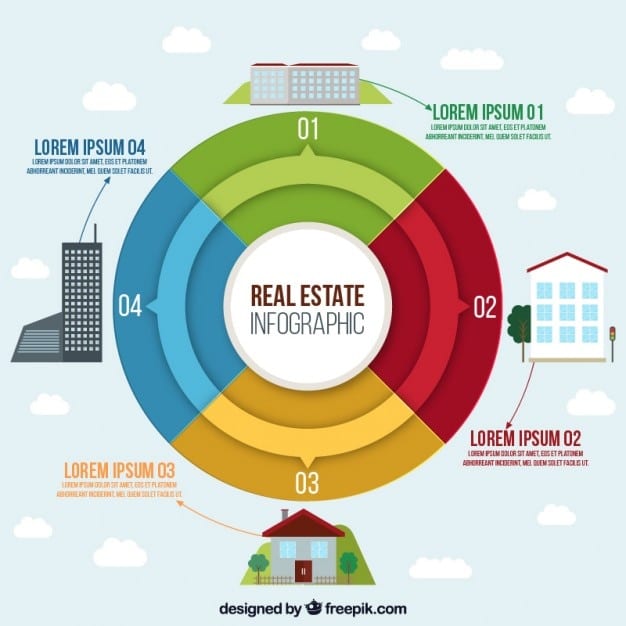REIT Sector Rotation: Maximize Returns in Real Estate Market Cycles

REIT sector rotation is a strategy that involves shifting investments among different real estate sectors based on economic cycles, aiming to capitalize on growth phases and potentially achieve a 15% return by strategically allocating capital.
Unlock a potential 15% return by understanding and implementing REIT Sector Rotation: Capitalize on Market Cycles for a Potential 15% Return. This strategy helps investors navigate the dynamic real estate market.
Understanding REIT Sector Rotation
REIT sector rotation is an investment strategy that involves moving capital between different real estate sectors based on the current phase of the economic cycle. The goal is to identify sectors poised for growth and shift investments accordingly.
Why Sector Rotation Matters
Sector rotation allows investors to take advantage of the varying performances of real estate sectors. By being proactive and informed, investors can maximize their returns and mitigate risks.
Economic Cycles and REITs
Different REIT sectors perform better during specific economic phases. Understanding these patterns is crucial for successful sector rotation.
- Early Cycle: Sectors like residential and retail tend to recover first.
- Mid Cycle: Office and industrial sectors often perform well due to increased business activity.
- Late Cycle: Healthcare and storage REITs may offer more stability as the economy slows down.
- Recession: All sectors may face challenges, but defensive sectors like data centers could outperform.

By aligning investments with the appropriate economic phase, investors can potentially enhance their returns and reduce their exposure to underperforming sectors.
Identifying Key Economic Indicators
Successful REIT sector rotation requires a keen understanding of economic indicators. These indicators provide insights into the current and future state of the economy, helping investors make informed decisions.
Gross Domestic Product (GDP)
GDP growth is a primary indicator of economic health. A rising GDP often signals expansion, while a declining GDP may indicate a recession.
Interest Rates
Interest rates heavily influence the real estate market. Lower rates can stimulate borrowing and investment, while higher rates can have a cooling effect.
Employment Data
Employment rates reflect the labor market’s strength. Strong job growth typically supports demand for commercial properties.
- Unemployment Rate: A low unemployment rate often indicates a strong economy.
- Job Creation: Positive job creation numbers signal economic expansion.
- Wage Growth: Rising wages can boost consumer spending and demand for retail spaces.
Monitoring these economic indicators assists investors in predicting sector performance based on economic trends.
Analyzing REIT Sector Performance
Analyzing the historical and current performance of various REIT sectors is crucial for making informed rotation decisions. Each sector has unique characteristics and responds differently to economic conditions.
Residential REITs
Residential REITs focus on apartments and housing. These REITs tend to perform well in the early stages of an economic recovery, driven by increased demand for housing.
Retail REITs
Retail REITs own and manage shopping centers and retail properties. Their performance is closely tied to consumer spending and economic growth.
Office REITs
Office REITs invest in office buildings and are strongly influenced by employment rates and business activity. They do well during economic expansion.
- Vacancy Rates: Decreasing vacancy rates indicate strong demand for office space.
- Rental Rates: Increasing rental rates reflect a healthy office market.
Industrial REITs
Industrial REITs focus on warehouses and distribution centers. They benefit from increased e-commerce activity and supply chain expansions.
A thorough analysis of these sectors enables investors to identify opportunities and make strategic shifts.
Implementing a REIT Sector Rotation Strategy
Implementing a successful REIT sector rotation strategy requires disciplined execution. This includes selecting the right REITs, timing the market, and managing risk.
Selecting the Right REITs
Choosing the right REITs within each sector is crucial. Look for companies with strong management, solid financials, and a history of consistent performance.
Timing the Market
Timing is everything in sector rotation. Monitor economic indicators and market trends, and be prepared to make moves when the time is right.
Managing Risk
Diversification is key to managing risk. Don’t put all your eggs in one basket. Spread your investments across multiple sectors and individual REITs.
- Diversification: Reduces risk by spreading investments across different assets.
- Due Diligence: Thoroughly research each REIT before investing.
- Stop-Loss Orders: Use stop-loss orders to limit potential losses.
Strategic implementation enhances the likelihood of achieving desired returns while mitigating potential pitfalls.

Case Studies: Successful REIT Sector Rotation
Examining real-world examples of successful REIT sector rotation can provide valuable insights and demonstrate the potential of this strategy. Here are a couple of hypothetical scenarios:
Early Recovery Phase
During an early recovery phase, an investor identifies that residential REITs are showing signs of growth due to increasing housing demand. They reallocate a portion of their portfolio from a defensive sector like healthcare to residential REITs. As the economy strengthens, the residential REITs outperform other sectors, generating significant gains.
Mid-Cycle Expansion
As the economy moves into a mid-cycle expansion, an investor observes that office REITs are benefiting from increased business activity and rising employment rates. They shift their allocation from residential REITs, which have already peaked, to office REITs. This adjustment allows them to capture the upside potential of the office sector during a period of economic growth.
Late-Cycle Stability
In a late-cycle environment, an investor notices the economy slowing down, and defensive sectors appear more attractive. They rotate investments into healthcare REITs, anticipating stable performance due to the non-cyclical nature of healthcare services. This defensive maneuver helps to protect the portfolio from the volatility associated with a slowing economy.
- Documented Performance: These cases emphasize the importance of continuous monitoring and adaptability.
- Risk Mitigation: Diversification is key to reducing potential losses.
Each scenario demonstrates how proactive sector rotation based on economic cycles can lead to improved investment outcomes, showcasing the strategic management of REIT investments.
Potential Returns and Challenges
REIT sector rotation offers the potential for significant returns, but it also comes with its own set of challenges. Understanding both aspects is vital for investors aiming to implement this strategy successfully.
Potential Returns
One of the primary benefits of REIT sector rotation is the opportunity to achieve higher returns compared to a static, diversified REIT portfolio. By strategically shifting investments to sectors poised for growth, investors can capitalize on market cycles and potentially achieve a 15% return or more.
Market Volatility
Market volatility is a significant challenge in the short term. Unforeseen economic, political, or global events can create fluctuations that impact the performance of REIT sectors, making accurate predictions more complicated.
Transaction Costs
Frequent buying and selling can lead to higher transaction costs, including brokerage fees, taxes, and other expenses. These costs can eat into your overall returns, especially if rotations occur often.
- Diversification: Mitigates risks but requires vigilant oversight.
- Due Diligence: Thoroughly research each REIT before investing.
- Stop-Loss Orders: Use stop-loss orders to limit potential losses.
A thoughtful approach to REIT sector rotation maximizes potential gains while managing the inherent risks and challenges involved.
| Key Point | Brief Description |
|---|---|
| 📈 Economic Indicators | Monitor GDP, interest rates, and employment data for insights. |
| 🏘️ Sector Analysis | Understand the performance of different REIT sectors. |
| 🔄 Rotation Timing | Time rotations strategically for optimal returns. |
| ⚠️ Risk Management | Diversify and use stop-loss orders to mitigate risk. |
Frequently Asked Questions (FAQ)
▼
REIT sector rotation is a strategy of moving investments between different real estate sectors according to the economic cycle to maximize returns.
▼
Economic indicators like GDP, interest rates, and employment data help investors predict which REIT sectors will perform best, guiding rotation decisions.
▼
Key strategies include diversification, conducting due diligence on REITs, and utilizing stop-loss orders to limit potential losses.
▼
Healthcare and storage REITs usually offer more stability during economic downturns due to consistent demand for their services.
▼
The frequency varies based on economic conditions and market signals; it could be quarterly, semi-annually, or annually, depending on market analysis.
Conclusion
Mastering REIT Sector Rotation: Capitalize on Market Cycles for a Potential 15% Return, requires a blend of economic insight, market analysis, and strategic execution. By understanding economic indicators, analyzing sector-specific trends, and managing risks, investors can potentially boost their returns and navigate the complexities of the real estate market with greater confidence.





